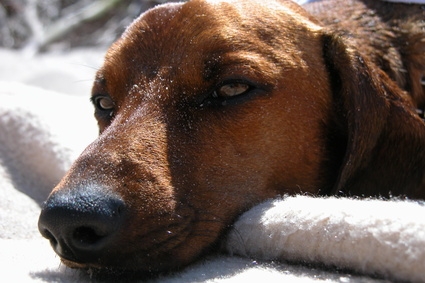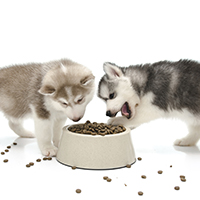Zinc is a trace element mandatory for the working of more than seventy metalloenzymes in an animal's body. A dog's physiology requires certain amounts of zinc, but the consumption of materials containing zinc will sometimes create toxic levels. This metal is in many items, including galvanized surfaces, batteries, wood additives, screws and nuts, vtiamins, creams, and many others. Since 1983, the penny has been consisting of approximately 96% zinc ( 2,440 mg / penny ). Ingestion of pennies is the most frequently recognized cause of zinc intoxication in dogs. A penny's shinny copper colour draws the awareness of canines who will at the very least wish to sniff the coins when left in a location dogs have access to. A coins texture and size seems to draw both children and dogs to placing the coin in their mouths. The swallowing is usually accidental but a common outcome to the coin being in the mouth.
The LD50 of zinc salts is 100 mg / kg ( approximately one penny for a 50-lb dog ). Once ingested, the acidic environment of the belly leads to formation of zinc salts, which are then soaked up in the duodenum and distributed to several tissues. The chemical reaction between zinc and stomach acid ( hydrochloric acid ) is equivalent to that in wet cell batteries and would probably be caustic to the gut lining. A survey by the American Society for the Prevention of Cruelty to Animals and the Animal Poison Control Center discovered that the most typical signs were anemia ( 72% ), depression ( 66% ), barfing ( 61% ), hemolysis ( 33% ), hemoglobinuria ( 22% ), and renal aberrations ( 22% ).
Elimination of zinc is mostly fecal thru pancreatic excretions, bile, and gastrointestinal ( GI ) mucosa, although some is also eliminated through urine. At this dose, zinc could cause a variety of signs based mostly on potential effects on red blood cell production, kidneys, pancreas, GI mucosa, and possible liver damage. The explicit mechanism of hemolysis is unknown but the damage to red blood cells causes the release of hemoglobin into a dog's body. Probabilities include direct red blood cell damage to membranes, damage to organelles, immune-mediated destruction from hapten formation, or inhibition of biochemical functions required for protection of red blood cells.
Dog owners should seek medical aid from their vets when a dog has ingested metal objects noting that pennies and zinc are extremely harmful and require immediate treatment. It's very important to keep circulation to the kidneys at satisfactory levels to stop renal failure. The University of Maryland suggests administering plenty of liquids. Preferably milk must be taken as an instant first aid. Dogs enjoy the flavour of milk and owners should be able to get their dog's to consume acceptable amounts to minimize the interplay of stomach acid and the metal ingested. Emergency vet facilities should be in a position to perform nasogastric suction or gastric lavage, by which the contents of the gut are washed out, this process, could be resorted to depending on the seriousness of poisoning. Antidotes are also administered to reverse the effect of zinc poisoning. In dogs with severe anemia and hypocupremia, transfusion of red blood cells and measurement of ceruloplasmin and serum copper are done.

 How to Mix Boiled Rice With Dry Dog Food
How to Mix Boiled Rice With Dry Dog Food
How to Mix Boiled Rice With Dry Dog Food
How to Mix Boiled Rice With Dry Dog Food
 Top Three Summer Lawn Hazards for Dogs
Top Three Summer Lawn Hazards for Dogs
Top Three Summer Lawn Hazards for Dogs
Top Three Summer Lawn Hazards for Dogs
 Nutrition and Feeding For Your Dog
A good diet will keep your dog look
Nutrition and Feeding For Your Dog
A good diet will keep your dog look
 Nature’s Help for Dogs Afflicted with Heart Disease
Various natural supplements might h
Nature’s Help for Dogs Afflicted with Heart Disease
Various natural supplements might h
 Shining a Light on Laser Therapy
Some veterinarians view low-energy
Shining a Light on Laser Therapy
Some veterinarians view low-energy